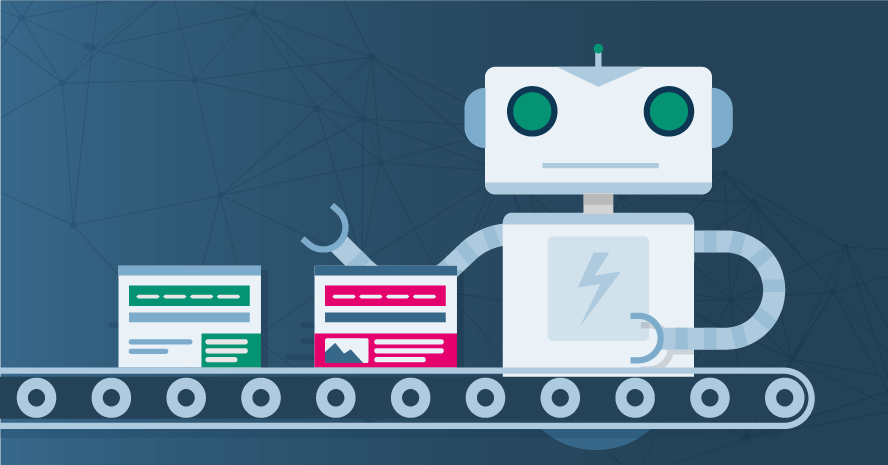
Today, the surface area for testing software and quality assurance is not as wide. Applications interact with each other through a number of APIs, legacy systems, and an increase in complexity from one day to the next. However, the increased complexity leads to a fair share of challenges that can be overcome by machine-based intelligence.


As software development life cycles become more complex as day and delivery time decreases, testers need to provide feedback and evaluation to development teams promptly. Given the breakneck pace of new software and product launches, there is no way to test soberly and rigorously in this day and age.
To Know More: How Much Does It Cost To Make A Mobile App 2020
Releases that happen once a month are now done on a weekly basis and updates are a factor almost every day. Therefore, it is very clear that artificial intelligence is the key to streamlining software testing and making it more smart and efficient.
By assembling machines that can accurately simulate human behavior, a team of testers can progress beyond the traditional path of manual testing models to an automated and precision-based continuous testing process.
The AI-powered connected trial platform can detect altered controls more efficiently than humans, and with constant updates to its algorithms, even slight changes can be observed.
When it comes to automation testing, artificial intelligence is widely used in object application classifications for all user interfaces. Here, marked controls are classified as you create the tools, and testers can pre-set train controls, which are usually found in out-of-the-box setups. After observing the hierarchy of controls, testers can create a technical map, looking at the AI Graphical User Interface (GUI) to obtain labels for various controls.
Since testing is about verification of results, access to many areas of test data is essential. Interestingly, Google DeepMind has created an AI program that uses deep reinforcement learning to play video games, thereby generating a lot of test data.


Below the line, the Artificial Intelligence test site will be able to track users who are doing exploratory testing, to evaluate and identify applications being tested using the human brain. In turn, this puts business users to the test, and users can fully automate test cases.
When assessing consumer behavior, the risk priority can be assigned, monitored, and classified accordingly. These data are a classic case for automated testing for assessing and combining different conflicts. Heat maps can help identify obstacles in the process and help you decide which tests to perform. By automating repetitive test cases and manual testing, testers can focus more on making data-driven connections and decisions.
Finally, the limited time to test risk-based automation is a critical factor when it comes to helping users decide which tests to run to get the greatest coverage. With the amalgamation of AI in test creation, implementation and data analysis, testers can permanently eliminate the need to manually update test cases, and detect defects and components between controls and spot links in a more effective manner.
Advantages of AI in testing:
Here are some important advantages of AI services in testing.
Improved accuracy
It is human to do wrong. Even the most accurate tester must make mistakes when performing a monotonous manual test. Automatic testing helps by making sure the same steps are performed each time, and never get lost in recording detailed results. Freed from repeatable manual testing, testers have more time to create new automated software tests and deal with advanced features.
To Know More: Top Benefits And Risks Of Artificial Intelligence
Beyond the limits of manual testing
Running a controlled web application test with 1,000+ users is almost impossible for most important software / QA components. With automated testing, it can mimic tens, hundreds, or thousands of virtual users that interact with network, software, or web-based applications.
Can help both developers and testers
Developers can use shared automated tests to quickly diagnose problems before moving to QA. Inspections run automatically whenever source code changes are checked in and notify the team or developer if they fail. Such features save developers time and boost their confidence.
Increase in total test coverage
With automated testing, software quality increases the overall depth and scope of testing, which can lead to overall improvements. Automated software testing memory and file contents, internal program status to see if the software behaves as expected. All in all, Test Automation can run 1000+ different test cases on each test run, providing coverage that is not possible with manual tests.
Time saving + money = fastest time to market
Because software tests are repeated every time the source code is revised, manually repeating those tests is not only time consuming but also very expensive. In contrast, once created, automated tests can be run again and again, very quickly, with zero additional cost. Software testing time can be reduced from days to just hours, which directly saves costs.
AI-based automation tools
Popular AI-based test automation tools are used here.
Testim.io
Testim.io uses ML for the writing, execution, and management of automated tests. It features working end-to-end testing and user interface testing. The tool becomes smarter with more runs and increases the stability of test suites. Testers can manage JavaScript and HTML to compose complex programming logic.
Appvance
Uses artificial intelligence to create test cases based on consumer behavior. The test portfolio comprehensively describes what it does on real systems production systems. It is 100% user-centric.
Test.ai
Testai is a mobile test mechanization that uses AI to perform regression examination. This is useful when obtaining the performance metrics of your application and is more of a monitoring tool than a functional testing tool.
Functionize
Functionalize uses machine learning for functional testing and is similar to other tools in the market for its ability to create tests quickly (without scripts), run multiple tests in minutes, and perform in-depth analytics.
Closing point:
As artificial intelligence moves into the software development lifecycle, with each passing day, companies are considering whether to fully embrace their product engineering practices.
In the long run, AI is not limited to assisting software testers but applies to all roles in software development that are involved in delivering high-quality products to the market.



























